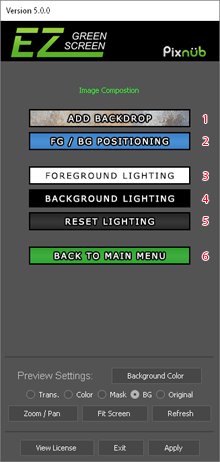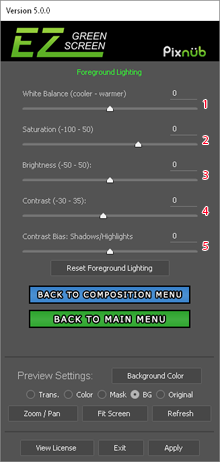The most common way to add an extracted image to the background is usign the basuc Photoshop functions. With EZ green Screen, the extracted image will normally be a non-destructive layer set (unless you chaneg the output to single layer). The non-destructive layer set gives you the flexibility to edit masks, spill ect. However, when meging the image into a basckgrouns, you need to either use COPY MERGED instead of copy ot merge the alyers first. This is really simple. See the video showing you how.
There is an option to add the background directly in EZ Green Screen. This method will allow you to make adjustments inside of the EZ Green Screen user interface while viewing the images on the background. This method is limited to a single layer background. If you import a multi layer file then it will be merged. However, a work around for this limitation is you can do this method to adjust the setting as you want against the merged multi layer background in EZ Green screen and then copy the foreground and paste into the multi layer background after applying EZ Green Screen

1 - Add Background: Adds a background into the image. Regardless of the actual background image size, the background size will auto adjust so the entire foreground will fit into the background. The background is kept as a smart object until EZ Green Screen is applied.
2 - FG / BG Positioning: Takes you to the menu to adjust the scaling and positioning for the composition.
3 - Foreground Lighting: Takes you to the menu to adjust the background lighting.
4 - Background Lighting: Takes you to the menu to adjust the background lighting.
5 - Reset Lighting: Resets all lighting settings back to zero for both the foreground and background.
6 - Back to Main Menu: Returns to the main EZ Green Screen menu.

1 - Scale BG: This is where you set the foreground to background size ratio. By default, the BG auto sizes as a smart object so the FG fits into the BG. To make the foreground smaller, increase the BG size. To make the FG larger, decrease the BG size. It is setup this way so that everything sizes non-destructively until EZ Green Screen is finished and applied.
2 - FG Move Left / Right: Moves the foreground left or right.
2 - FG Move Up / Down: Moves the foreground up or down.
4 - Reset Scaling and Positioning: Resets the BG size and centers the foreground.
5 - Final Scaling: This selects how the image is scaled when EZ green Screen is applied. If you choose to scale the FG then the final dimensions are the exact dimensions of the background image. IF you choose to scale the BG then the foreground retains it's original size and the BG image is scaled. The final scaling can also be done as a smart object.
6 - Final Scaling Mode: Choose either bicubic or bicubic automatic. In bicubic automatic, downsizing is done as bicubic sharper and upsizing is done as bicubic (not bicubic smoother).

Lighting Adjustments EZ Green Screen 5 has the Imager Balancer filter built into it. The lighting adjustment work exactly the same as they do in Image Balancer. There are separate adjustment menus for the FG and BG lighting. The adjustments work the same for both the FG and BG. If you choose to output all layers then EZ Green Screen will output the lighting adjustment in non-destructive adjustment layers.
1 - White Balance: Adjusts the color temperature warmer or cooler. This adjustment has a strong effect so you will usually use it at lower values.
2 - Saturation: A standard saturation adjustment.
3 - Brightness: Uses a curves layer to apply a non-linear brightness to avoid channel clipping.
4 - Contrast: Uses a curves layer to apply a non-linear contrast curve (S curve) to avoid channel clipping.
5 - Contrast Bias: Changes how the contrast curve is shaped. A positive value applies more contrast to the highlights. A negative value applies more contrast to the shadows.
© Pixnub Software